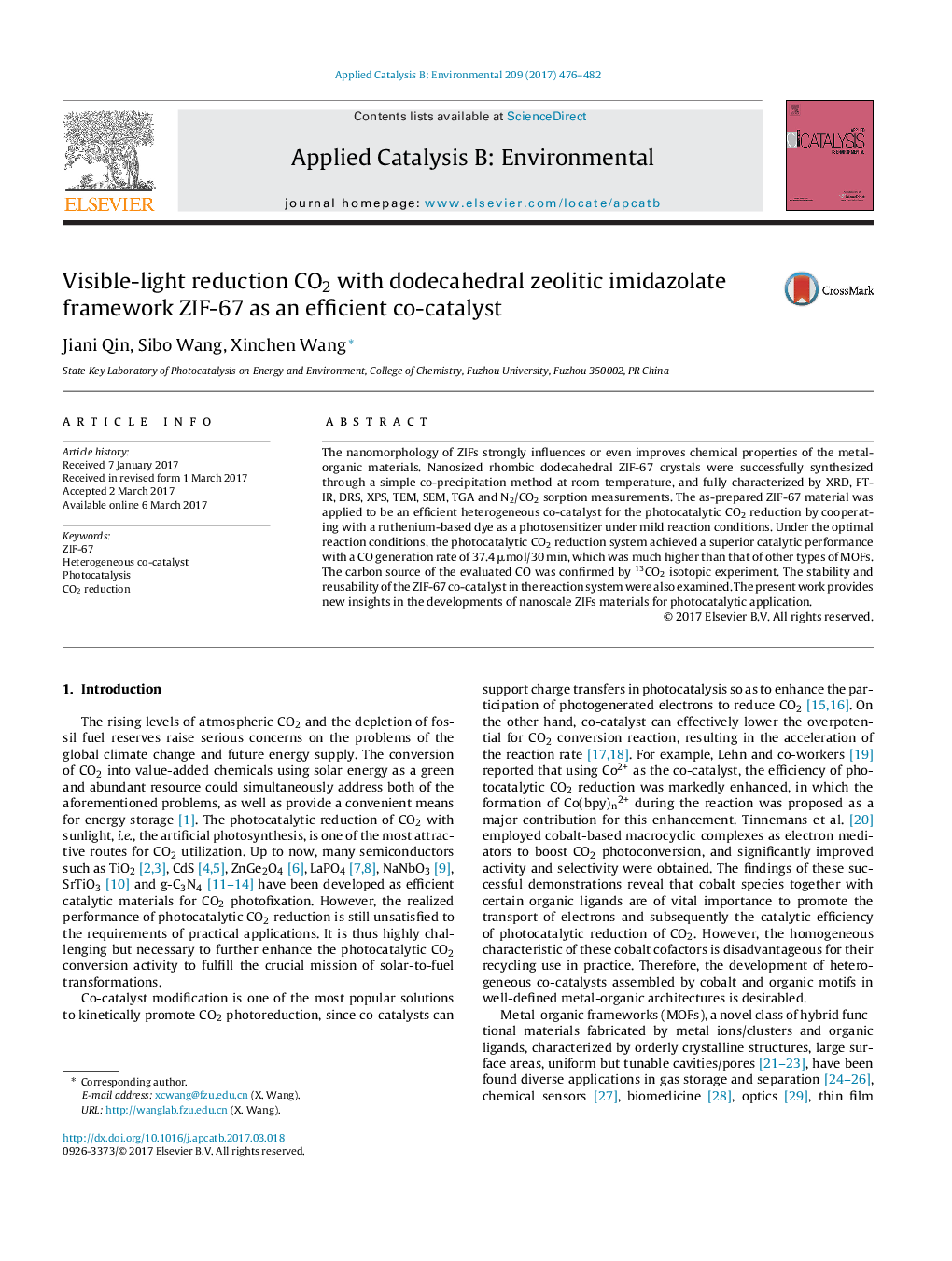| Article ID | Journal | Published Year | Pages | File Type |
|---|---|---|---|---|
| 6454211 | Applied Catalysis B: Environmental | 2017 | 7 Pages |
â¢Photocatalytic CO2 reduction by the cooperation of ZIF-67 and Ru-dye was studied under mild reaction conditions.â¢The ZIF-67/dye can efficiently photocatalyze CO2 conversion to CO with visible light, with a high TON of 112.â¢The ZIF-67 acts as a co-catalyst to enhance CO2 adsorption and to promote charge separation kinetics on the photosensitizers.
The nanomorphology of ZIFs strongly influences or even improves chemical properties of the metal-organic materials. Nanosized rhombic dodecahedral ZIF-67 crystals were successfully synthesized through a simple co-precipitation method at room temperature, and fully characterized by XRD, FT-IR, DRS, XPS, TEM, SEM, TGA and N2/CO2 sorption measurements. The as-prepared ZIF-67 material was applied to be an efficient heterogeneous co-catalyst for the photocatalytic CO2 reduction by cooperating with a ruthenium-based dye as a photosensitizer under mild reaction conditions. Under the optimal reaction conditions, the photocatalytic CO2 reduction system achieved a superior catalytic performance with a CO generation rate of 37.4 μmol/30 min, which was much higher than that of other types of MOFs. The carbon source of the evaluated CO was confirmed by 13CO2 isotopic experiment. The stability and reusability of the ZIF-67 co-catalyst in the reaction system were also examined. The present work provides new insights in the developments of nanoscale ZIFs materials for photocatalytic application.
Graphical abstractDownload high-res image (140KB)Download full-size image
